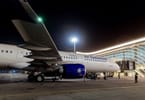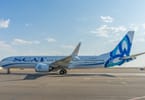Becoming a UNESCO World Heritage Site has turned Malacca into a new magnet for many Asian travelers. The historical city, with its unique blend of Chinese, Malay, Dutch, Portuguese, British, and Sumatran cultures, has turned into an ethnic kaleidoscope reflected in the historical heart of the city.
The state government has maintained and conserved Malacca’s heritage well apart from introducing new tourism products, and the city’s image has been largely preserved and old settlements restored. At Bandar Hilir, for example, visitors can see vestiges and old buildings constructed by former colonial powers. Portuguese settlements can still be visited at Ujong Pasir, while along the Melaka River, visitors can admire old Sino-Malay houses, many of them today transformed into coffee shops or museums.
The popularity of Malacca is on the increase – from six million visitors in 2007, the old city recorded 7.4 million arrivals in 2008 and beat an absolute record in 2009 with 8.9 million visitors. According to data, revenues from tourism and services contribute to 69 percent of the state’s GDP. “We are becoming the powerhouse of tourism in mainland Malaysia,” said the Malacca office of tourism.
While today Malacca offers everything a tourist can dream of, from a sophisticated destination – hotels, museums, shopping centers, and international hospitals (health tourism is popular especially for Indonesian visitors) – the city was lacking a proper airport facility. The airfield used by visitors had an atmosphere from the fifties with its shabby terminal. In 2008, Malacca Batu Berendam airport handled just 24,000 passengers, and preliminary figures for 2009 were even lower at 19,000 passengers. A very low number when compared to Johor Bahru, Kuala Lumpur, or Singapore. But this is also poised to change following the inauguration of a brand-new facility in January.
A new 7,000 m² terminal was inaugurated last January to a cost of US$30 million. It can now accommodate up to 1.5 million passengers – compared to 300,000 previously. The runway was expanded from 1,370 m to 2,135 m and is able to accommodate the Airbus A320. However, despite the promise by Prime Minister Najib Tun Razak that the new facility would boost traffic from and to Malacca, the airport still lacks flights. MAHB, Melaka’s current airport owner, failed to secure low-cost flights despite earlier promises by AirAsia and Firefly to link the airport. It prompted the Malacca government to formulate new strategies to promote the airport. In February, Malaysia’s business weekly paper, “The Edge,” mulled out an airport’s take-over from Malaysian Airports Holdings Bhd (MAHB).
Malacca state claims that passenger taxes are too high and discouraging for new airlines to come. According to the state government, AirAsia would only start flying to Malacca if the Passengers Service Tax would be lowered to US$2.50 for an international flight instead of the current US$15 fee. The regional government is looking to see more flights from Sumatra, Peninsular Malaysia, and maybe Kuching and Kota KInabalu. The airport would then be part of the strategy to turn Malacca into a hub for medical tourism.
Other grand infrastructure plans for Malacca include the construction of a bridge to Sumatra – an investment estimated at US$13.2 billion – on a site that stretches approximately 50 km over the Straits of Malacca. There is also a plan to build an Aerorail Transit System due to cost US$508 million to relieve traffic congestion in the city.
WHAT TO TAKE AWAY FROM THIS ARTICLE:
- There is also a plan to build an Aerorail Transit System due to cost US$508 million to relieve traffic congestion in the city.
- The runway was expanded from 1,370 m to 2,135 m and is able to accommodate the Airbus A320.
- The historical city, with its unique blend of Chinese, Malay, Dutch, Portuguese, British, and Sumatran cultures, has turned into an ethnic kaleidoscope reflected in the historical heart of the city.






















